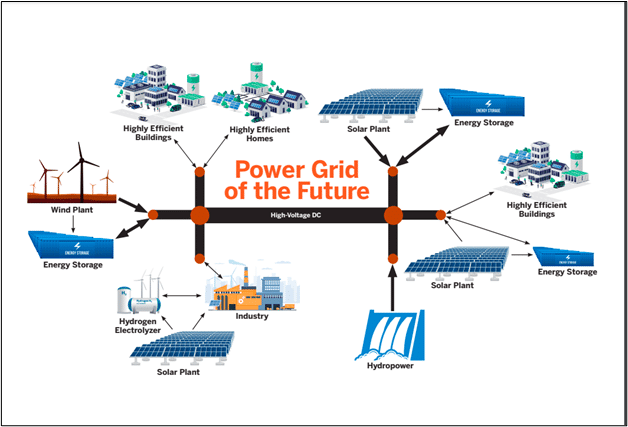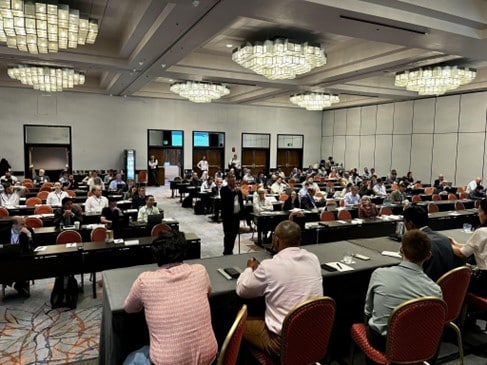Peer-to-peer learning
Energy grids — the vast networks connecting producers and consumers of energy — are among the most complex systems ever built, and the most essential. They are also constantly evolving, as technology advances and new ways of thinking emerge. Since 1989, Energy Systems Integrations Group (ESIG) has taken a leading role in monitoring and advancing change in energy systems, serving as both an educator and convener for stakeholders ranging from nonprofits to utilities to government agencies. Together, ESIG’s members work to address changes in energy systems as — and even before — they emerge.
“Since our inception, ESIG has been an essential forum for industry experts to share observations and experiences in real time, advancing our collective learning about how to best balance affordability and reliability while implementing 21st-century technology into energy grids.”
Charlie Smith, former Executive Director, ESIG
Incorporating renewables
One key challenge is helping energy suppliers update and modernize their energy systems to account for growing dependence on renewable energy. For example, following a series of isolated power disruptions to areas across Texas, ESIG was instrumental in helping the Electric Reliability Council of Texas, or ERCOT, adopt the Institute of Electrical and Electronics Engineers Standards Association 2800 Standard (IEEE2800). IEEE2800 standards provide technical requirements for improving the quality and performance of renewable energy resources, such as wind and solar resources, “striking a balance between state of the art versus forward-looking technology capabilities.” This enables ERCOT to envision and plan for a future power system with higher inputs of renewable energy.
“ESIG is working with power providers across the United States and the world to ensure the reliability of power systems with high shares of renewable resources by implementing state-of-the art technological advancements.”
Julia Matevosyan, Chief Engineer, ESIG
Part of the vision relies on grid forming (GFM) technology, which enables batteries and wind and solar plants to be used more regularly and reliably, and therefore allows them to make up an increasing share of the power system. In March 2023, ESIG published two briefs highlighting benefits of grid forming batteries for the future of energy transition and calling for grid forming technology to be implemented immediately. One of the two briefs, which was presented directly to the Public Utility Commission of Texas, showed how GFM batteries could help strengthen the ERCOT power system by integrating more renewable resources into the grid. Inspired in part by this study, ERCOT completed a preliminary study evaluating the benefits of other GFM resources in summer 2023, and will develop new GFM requirements for summer 2024. By implementing GFM technology in renewable energy-rich parts of the ERCOT system, Texas will make the transition to renewable energy in a way that is both reliable and secure.
Following ESIG’s initiative with ERCOT, other regional transmission organizations are adopting IEEE2800 standards and relying on ESIG for practical advice and expertise, such as: Southwest Power Pool, which services 14 states across the Midwest; Midwest Independent System Operator, which works in the Midwest, South and in Manitoba; New York Independent System Operator, and New England Independent System Operator. Even as it works to improve standards, ESIG is facilitating adoption of grid forming technology in the U.S. and internationally, working with system operators in Ireland, Great Britain, Germany, Denmark and Australia. ESIG’s unique expertise and approach to energy systems is helping everyone — from engineers to regulators and policy makers — understand the big-picture benefits of implementing new energy standards and technology.
A holistic approach to energy systems
ESIG members have developed technical and topical workshops that are the go-to source for accessible, credible information on energy systems integration, technology, and deployment. ESIG’s members also convene working groups that develop topical reports, white papers, fact sheets, technical and policy briefs, tutorials, webinars and blog posts that help define and address engineering challenges. Their work highlights the growing need for a total systems view of ways that we produce, convert, deliver, and use energy, especially in response to the demands created by the implementation of new policies.
“It’s about educating regulators and policy makers to understand a systems view of decarbonization. If you look at one piece in isolation it won’t be as effective as a holistic view.”
Debra Lew, Executive Director, ESIG
For example, in 2021, ESIG’s Redefining Resource Adequacy Taskforce released a report that examined emergent patterns of shortfall — periods in which there is not enough energy to meet demand. The report made several recommendations, including improving metrics used to gauge the magnitude, duration and frequency of power-related events. Widespread adaptation of these new metrics, already underway in several regions across the United States, will lead to increased coordination, dependability and stability of power systems in the United States.
As the need for sustained dialogue across and between energy systems becomes more apparent, ESIG looks to expand its capacity to engage the growing interest in the energy industry.

ESIG’s conceptualization of power grids of the future, which incorporate renewables and energy storage.
A growing network of industry experts
Since 2020, Sequoia Climate Foundation has worked with ESIG to improve its reach and expand its membership. ESIG now has full time staff dedicated to providing an ever-expanding, increasingly interested membership — as well as members of the public — with the resources they need to take advantage of policies designed to save both consumers and producers money and time.
In addition to its corporate memberships, ESIG also provides special membership for students and a mentoring program for early career energy professionals, ensuring that the membership consistently reflects shifts in needs and outlook of the energy industry. Its ever expanding network of over 200 member organizations means that its unique peer network can discuss and address changes before they become challenges.
“With a small amount of money, and the right people, ESIG is moving this industry into the future. We’re seeing such an explosion of new resources to the grid. We’re seeing interest in a desire for connection and cooperation. We are ready. ESIG is there to be a catalyst.”
